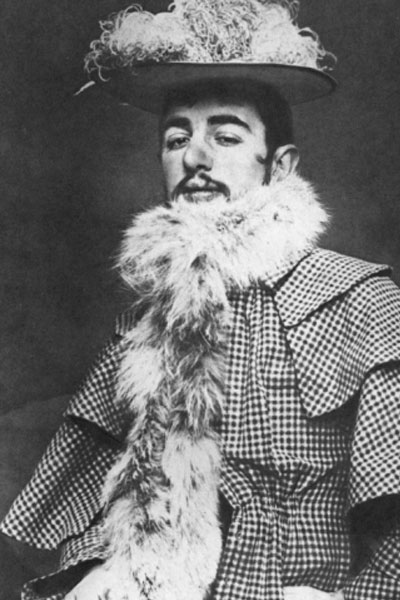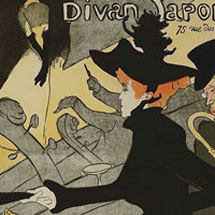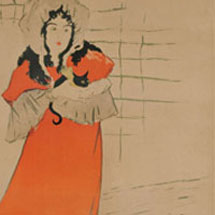
An aristocratic, alcoholic dwarf known for his louche lifestyle, Henri de Toulouse-Lautrec created art that was inseparable from his legendary life.
His career lasted just over a decade and coincided with two major developments in late nineteenth-century Paris: the birth of modern printmaking and the explosion of nightlife culture. Lautrec's posters promoted Montmartre entertainers as celebrities, and elevated the popular medium of the advertising lithograph to the realm of high art. Though he died tragically young (at age thirty-six) due to complications from alcoholism and syphilis, his influence was long-lasting. It is fair to say that without Lautrec, there would be no Andy Warhol.
Lautrec's prints often display dazzling technical effects, as new innovations in lithography during the late nineteenth century permitted larger prints, more varied colors, and nuanced textures. The artist frequently employed the spattered ink technique known as crachis, seen in his series of prints depicting Miss Loïe Fuller (1970.534). Fuller was an American famous in fin-de-siècle Paris for her performances combining dance, multicolored artificial lights (her nickname was the "Electric Fairy"), and music. As she twirled and bounded across the stage, enormous lengths of fabric would billow outward from her body and reflect the colored lights, creating a spectacular effect. Lautrec executed about sixty versions of this print in a variety of colored inks, including gold and silver, which evoke, cumulatively, the effect of her performances.
Below are just a few of Henri De Toulouse-Lautrec's Prints:

'Moulin Rouge: La Goulue', 1891; Lithograph printed in four colors; three sheets of wove paper

‘Divan Japonais’, 1892–93; Lithograph printed in four colors on wove paper

‘May Belfort’, 1895; Lithograph printed in four colors
